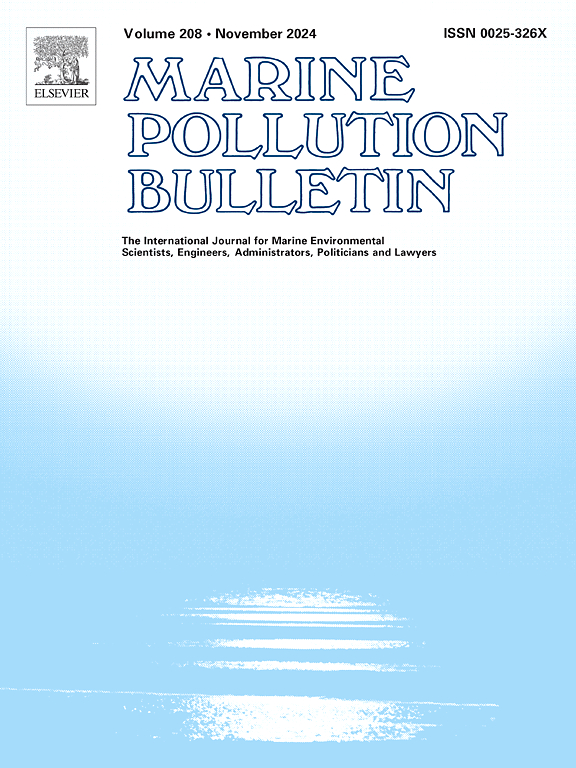盐度变化驱动恒河河口浮游植物动力学:沿纵向河口梯度的物种反应和污染指标建模方法的启示。
IF 5.3
3区 环境科学与生态学
Q1 ENVIRONMENTAL SCIENCES
引用次数: 0
摘要
研究了印度胡格利马特拉河口不同盐度条件下浮游植物群落的时空变化及其物种响应。在10个采样站进行了详尽的调查,记录了浮游植物95属132种。本研究共发现12个以硅藻纲为优势的藻类类群(43种)。指示种分析显示,潮淡水区以肉芽Aulacoseira granulata、quadricauda、Eudorina sp.和Protococcus sp.居多,中间区以Pleurosigma sp.、Synedra sp.和Coscinodiscus sp.居多。上孙德尔本斯以Cyclotella sp.和Closterium sp.为主,下孙德尔本斯以Entomoneis sp.和Chaetoceros sp.为主。采用GAM模型建立物种响应曲线,确定河口各盐碱带种群数量最大的类群。本文章由计算机程序翻译,如有差异,请以英文原文为准。
Salinity variations drive the phytoplankton dynamics in the Gangetic estuary: insights from the modelling approach for species responses and pollution indicators along the longitudinal estuarine gradient
Spatial and temporal variation in phytoplankton assemblage and their species responses with varying salinity regimes were investigated in the Hooghly Matlah estuary, India during two annual period. The exhaustive survey in the ten sampling stations recorded 132 species of phytoplankton belonging to 95 genera. The study revealed 12 taxonomic algal groups with the dominance of class Bacillariophyceae (43 species). Indicator species analysis revealed the dominance of Aulacoseira granulata, Scenedesmus quadricauda, Eudorina sp. and Protococcus sp. in the tidal freshwater zone while a higher proportion of Pleurosigma sp., Synedra sp. and Coscinodiscus sp. were observed in the intermediate zone. The middle and lower estuary were dominant with Cyclotella sp. and Closterium sp. in upper Sundarbans and Entomoneis sp. and Chaetoceros sp. in lower Sundarbans. Species response curve using GAM modelling was performed to identify the taxa that had their population maximum in various saline zones of the estuary.
求助全文
通过发布文献求助,成功后即可免费获取论文全文。
去求助
来源期刊

Marine pollution bulletin
环境科学-海洋与淡水生物学
CiteScore
10.20
自引率
15.50%
发文量
1077
审稿时长
68 days
期刊介绍:
Marine Pollution Bulletin is concerned with the rational use of maritime and marine resources in estuaries, the seas and oceans, as well as with documenting marine pollution and introducing new forms of measurement and analysis. A wide range of topics are discussed as news, comment, reviews and research reports, not only on effluent disposal and pollution control, but also on the management, economic aspects and protection of the marine environment in general.
 求助内容:
求助内容: 应助结果提醒方式:
应助结果提醒方式:


